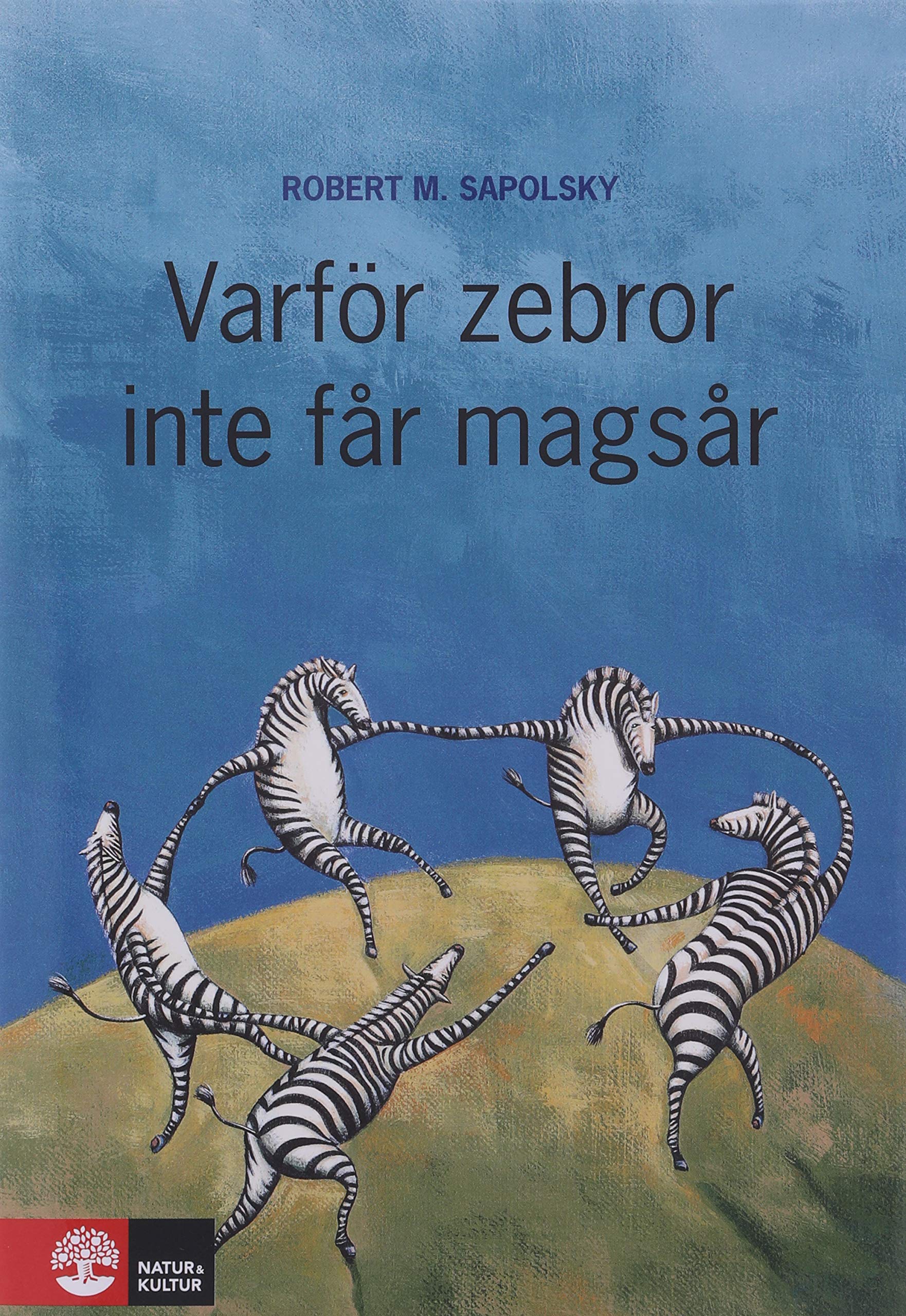What do you think?
Rate this book


456 pages, Hardcover
First published January 1, 1993
استرسِ روانیِ پایدار اختراع مدرنی است که به طور عمده به انسان و سایر نخستیهای اجتماعی محدود میشود. ما قادریم هیجانات بسیار شدیدی را تجربه کنیم که صرفاً محدود به افکارمان هستند.
استرس مداوم یا مکرر میتواند به طرق بیشماری بدن ما را آسیبپذیر کند.
به نظر میرسد خطر فقر تاثیر بسیار زیادی بر سلامتی داشته و بزرگترین عامل خطر در تمام درمانهای رفتاری است. اگر میخواهید شانس زندگی طولانی و سالم را افزایش دهید، فقیر نباشید.
اگر فقیر به دنیا بیایید، اما در سه هفتگی در قرعهکشی برنده شوید و بقیهی عمرتان را با دونالد ترامپ به صرف شام بگذرانید، همچنان برای باقی عمرتان در برخی حوزهها افزایش آماریِ خطر ابتلا به بیماری را خواهید داشت.
By now, if you are not depressed by all the bad news in the preceding chapters, you probably have only been skimming. Stress can wreak havoc with your metabolism, raise your blood pressure, burst your white blood cells, make you flatulent, ruin your sex life and if that's not enough, possibly damage your brain. Why don't we throw in the towel right now?
"Genes are rarely about inevitability, especially when it comes to humans, the brain, or behavior. They’re about vulnerability, propensities, tendencies. In this case, genes increase the risk of depression only in certain environments: you guessed it, only in stressful environments.
"At one extreme, you have the mainstream medical crowd that is concerned with reductive biology. For them, poor health revolves around issues of bacteria, viruses, genetic mutations, and so on. At the other extreme are the folks anchored in mind-body issues, for whom poor health is about psychological stress, lack of control and efficacy, and so on. A lot of this book has, as one of its goals, tried to develop further links between those two viewpoints. This has come in the form of showing how sensitive reductive biology can be to some of those psychological factors, and exploring the mechanisms that account for this. And it has come in the form of criticizing the extremes of both camps: on the one hand, trying to make clear how limiting it is to believe that humans can ever be reduced to a DNA sequence, and on the other, trying to indicate the damaging idiocy of denying the realities of human physiology and disease. The ideal resolution harks back to the wisdom of Herbert Weiner [...] that disease, even the most reductive of diseases, cannot be appreciated without considering the person who is ill.
...
If we can’t consider disease outside the context of the person who is ill, we also can’t consider it outside the context of the society in which that person has gotten ill, and that person’s place in that society."
"It is clearly a travesty to lead cancer patients or their families to believe, misinterpreting the power of the few positive studies in this field, that there is more possibility for control over the causes and courses of cancers than actually exists. Doing so is simply teaching the victims of cancer and their families that the disease is their own fault, which is neither true nor conducive to reducing stress in an already stressful situation."
"The realm of stress management is mostly about techniques to help deal with challenges that are less than disastrous. It is pretty effective in that sphere. But it just won’t work to generate a cult of subjectivity in which these techniques are blithely offered as a solution to the hell of a homeless street person, a refugee, someone prejudged to be one of society’s Untouchables, or a terminal cancer patient. Occasionally, there is the person in a situation like that with coping powers to make one gasp in wonder, who does indeed benefit from these techniques. Celebrate them, but that’s never grounds for turning to the person next to them in the same boat and offering that as a feel-good incentive just to get with the program. Bad science, bad clinical practice, and, ultimately, bad ethics. If any hell really could be converted into a heaven, then you could make the world a better place merely by rousing yourself from your lounge chair to inform a victim of some horror whose fault it is if they are unhappy."
"Stress is not everywhere. Every twinge of dysfunction in our bodies is not a manifestation of stress-related disease. It is true that the real world is full of bad things that we can finesse away by altering our outlook and psychological makeup, but it is also full of awful things that cannot be eliminated by a change in attitude, no matter how heroically, fervently, complexly, or ritualistically we may wish. Once we are actually sick with the illness, the fantasy of which keeps us anxiously awake at two in the morning, the things that will save us have little to do with the content of this book. Once we have that cardiac arrest, once a tumor has metastasized, once our brain has been badly deprived of oxygen, little about our psychological outlook is likely to help. We have entered the realm where someone else—a highly trained physician—must use the most high-tech of appropriate medical interventions
...
These caveats must be emphasized repeatedly in teaching what cures to seek and what attributions to make when confronted with many diseases. But amid this caution, there remains a whole realm of health and disease that is sensitive to the quality of our minds—our thoughts and emotions and behaviors. And sometimes whether or not we become sick with the diseases that frighten us at two in the morning will reflect this realm of the mind. It is here that we must turn from the physicians and their ability to clean up the mess afterward and recognize our own capacity to prevent some of these problems beforehand in the small steps with which we live our everyday lives."